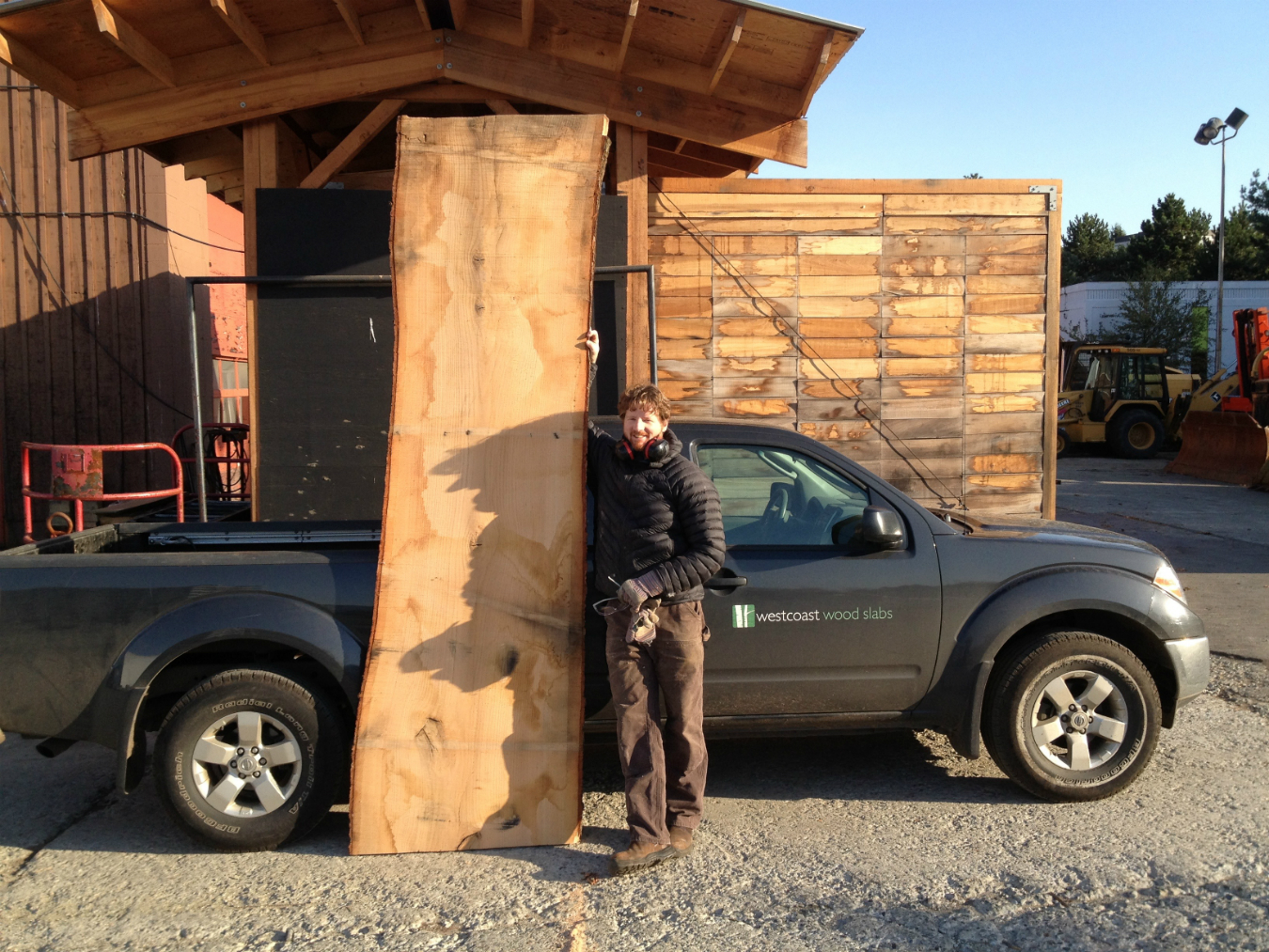For Jason Hawkins, it all started when he needed a new bed. He was in his thirties and had spent much of his youth doing woodworking projects with his dad. Hawkins knew he could make a bed frame with his own hands. He just needed a place to get wood.
An avid outdoorsman, Hawkins was familiar with the clearcutting practices that had partially scalped British Columbia’s mountains. Far from human civilization, massive cut blocks were carpeted with slash—unusable timber. Unusable for logging companies, at least. Hawkins could make do.
With a wedging technique developed by the indigenous people of B.C., he began splitting salvaged cut block logs into planks. It was the beginning of a new obsession. Before long, Hawkins was running a small a mill out of his garage, making slab furniture from salvaged wood for friends and family. That was in 2005. Since 2010, West Coast Wood Slabs has been his full-time occupation, and employs three other individuals.
“It’s weird how that happens in my life,” he says. “I develop passions, and they take me over.” Hawkins works with some of Vancouver’s more forward-thinking urban tree-falling businesses to ensure that timbers that need to come down because of disease, construction, or storm damage don’t go to waste. And the city is full of beautiful hardwood specimens: elm, cherry, white oak. Cutters alert Hawkins when they discover appropriate trees; later, he shows up, hauls them off, and mills them into planks. About a year and a half of drying prepares the planks for use. Then, with technical knowledge and a refined touch—before founding his company, Hawkins was a registered massage therapist—he transforms them into timeless works of functional art.
West Coast Wood Slabs’s tables show off the natural beauty of the wood, preserving a tree’s living edge—its outer contours—as well as its grain, both of which are shaped by the complex interplay of wind, sun, water, and time. And they’re made to become heirlooms. “We design all our pieces to last 1,000 years,” says Hawkins. These items carry ethical as well as aesthetic weight. By exclusively using salvaged wood, the work creates a minimal footprint. “We’ve had our chance to rape and pillage the old growth forests,” says Hawkins, noting that he never wants to see another ancient giant fall. “We need to make the most of the wood we do have.”
Hawkins estimates that about 70 per cent of his buyers are individuals furnishing their homes. But occasionally, institutions come calling. On the day this writer visits, Hawkins indicates a stack of thick-cut red cedar about to be transformed into benches and tables for the B.C. Women’s Hospital and Health Centre, outside of which it used to grow. “Those are from a tree planted by Queen Elizabeth,” says Hawkins. In the months to come, he and his team will transform its remains into gorgeous, practical pieces, built to outlast even some of B.C.’s most long-lived red cedars. The tree, a piece of history, had to come down—but it doesn’t have to disappear.
Refine your eye with more Design stories.










